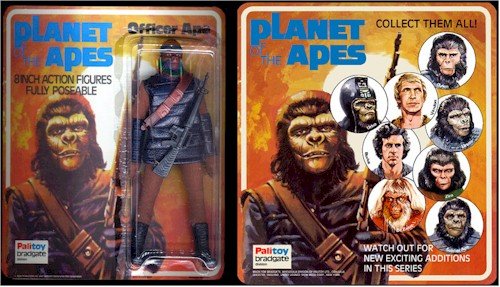A little over a century ago, during the Christmas season of 1887, a thin, craggy-faced figure emerged from the dark shadows and thick, swirling fog of Victorian London. He was a brilliant sleuth with the improbable name of Sherlock Holmes – and he was destined to become one of the most memorable characters in all of fiction.
Holmes’ adventures have been translated into almost every language. The original novels and stories are still in print and in recent years we have been entertained by dozens of new books and stories written about him by modern writers.
Over the years the steady outpouring of products and advertising ephemera has never slackened: Sherlock Holmes comic books, a Sherlock Holmes geography, several Sherlock Holmes cookbooks, and much more, including Sherlock Holmes calendars, so you won’t forget ‘his’ birthday (January 6).
Holmes’ creator, Arthur Conan Doyle, didn’t invent the mystery story, but in Sherlock Holmes, he created its most enduring character. During a 40-year span from 1887 to 1927, Doyle wrote a total of 56 short stories and four full-length novels about Holmes and his enthralling adventures.
In 1893, bored with his detective, Doyle attempted to kill him off. In The Adventure of the Final Problem, Holmes dies in a fall from the cliffs of Switzerlandís Reichenback Falls, while struggling with his arch-enemy, the evil Professor Moriarity. Doyle’s plan backfired, for Holmes’ ‘death’ only increased public interest. After resisting the demands for more tales about his sleuth for three years, Doyle capitulated and continued writing about Holmes for another 21 years.
Classic Comics (later Classics Illustrated) comic book, No. 33 (January 1947).
Doyle never planned to be a writer. After studying at the University of Edinburgh, he practiced medicine for several years but found himself chronically short of cash. To earn extra money, he began writing novels and short stories.
One of them was A Study in Scarlet, which marked the first appearance of Sherlock Holmes. After many rejections, Doyle finally sold the piece to Ward, Lock & Co., who used it as a cover story for their 1887 Beeton’s Christmas Annual. It was so well received, especially in America, that Doyle was encouraged to write more about the remarkable detective and his doctor friend. A Study in Scarlet was published in book form in 1888; two years later J.B. Lippincott Co. printed the first American book edition.
The next Holmes story, The Sign of the Four, appeared in the February 1890 issue of Lippincott’s Magazine. From then until the last story, in 1927, the Strand magazine was Sherlock Holmes’ showcase. American readers had to wait up to six months before new stories were reprinted in one of our magazines – usually Harper’s, Collier’s, or Liberty – or in a Sunday newspaper supplement.
The first stage version of a Holmes story opened in May 1894. Relics of Holmes’ theatrical life are quite scarce, but if you can find them, they are not prohibitively priced. Among the actors who portrayed the sleuth, the best-known remains William Gillette, one of America’s greatest and most popular theatrical stars.
Beginning in 1899, Gillette played Holmes for 30 years and also starred in the opening episode of the first radio series in 1930. The following 110 exploits starred Richard Gordon. The show’s sponsor was George Washington Coffee.
In all, more than 100 English and American motion pictures about Holmes and Watson – starting with a one-reeler in 1903 – make up our cinema treasure trove. Many actors, some famous, many not, have starred as the detective and the doctor. To many fans, the ‘real’ Sherlock Holmes and Dr. Watson, will always be Basil Rathbone and Nigel Bruce. Between 1939 and 1946, they played the brilliant investigator and his bumbling sidekick in 13 films and repeated their roles on radio.
Film memorabilia offers Holmes collectors many opportunities. Posters, lobby cards, and stills from the Rathbone-Bruce classics of the 1940s are in fairly good supply, if a bit expensive. Material from later Holmes movies, such as The Seven Percent Solution, is more reasonably priced.
The first artist of importance to illustrate Holmes was the Strand’s Sidney Paget who did a total of 357 drawings for The Hound of the Baskervilles and the 10 short stories that were later gathered together and published as The Adventures of Sherlock Holmes in the hardbound edition.
In this country, the premier Holmes artist was Frederick Dorr Steele. During the 1920s he created the Sherlock Holmes we all recognize today, complete with chiseled profile, pipe, and deerstalker hat ñ an image so distinctive that most people can recognize it in silhouette. Steele used photographs of William Gillette in costume for inspiration.
Apart from magazines and books, the first Sherlockian collectible was a board game manufactured by Parker Brothers. Called ‘Sherlock Holmes,’ the game was first sold in 1895; a revised version came out in 1904. Over the years, fans have had several games to choose from: ‘Bringing Sherlock Holmes’ (Doubleday, Doran Co., 1935); ‘Sherlock Holmes: The Game of the Great Detective’ (National Games, Inc., 1956); ‘Murder on the Orient Express: A Sherlock Holmes Mystery Game’ (Ideal Toy Corp., 1967).
Other collectable items produced in the last 50 or 60 years include jigsaw puzzles, bookplates, comic strips, comic books, dolls, prints, and a ‘Sherlock Holmes Writing Set’ (Stuart Hall Co., 1946), with writing paper and invisible ink. For a brief time in the 1920s, ‘Sherlock Holmes’ cigars were marketed in this country. Their embossed, colorful cigar-box labels bore a Sherlock portrait of the William Gillette variety. About the same time, a British tobacco firm, Turf Cigarettes, offered ‘Conan Doyle Characters’ cards, mostly derived from the Sherlock Holmes sagas. Each cigarette package contained one card; 25 made up a complete set. There were several printing runs of these, some with minor changes.
At the turn of the century, a few souvenir services were published featuring Sherlock Holmes, Dr. Watson, and their cases, but these are rare and very difficult to find. The best is a set of 12 or more, with illustrations taken directly from the original Strand magazine drawings by Sidney Paget. They were used by the magazine in 1903, to publicize Holmes and Watson’s return to its pages.
Regardless of the passage of time since the duo first walked the streets of London in search of clues to solve crimes, interest in them continues to grow. Long before the age of computers and the internet, Sherlock Holmes was a superhero who depended upon brain, not brawn. In 1911, an ad for a new Holmes story promised readers: ‘Terror, danger, cunning, mystery, courage, ingenuity; an extraordinary crime; an amazing and unexpected solution.’ There ís no doubt that Sherlock Holmes fulfilled all those promises – and he’s still doing it today.




